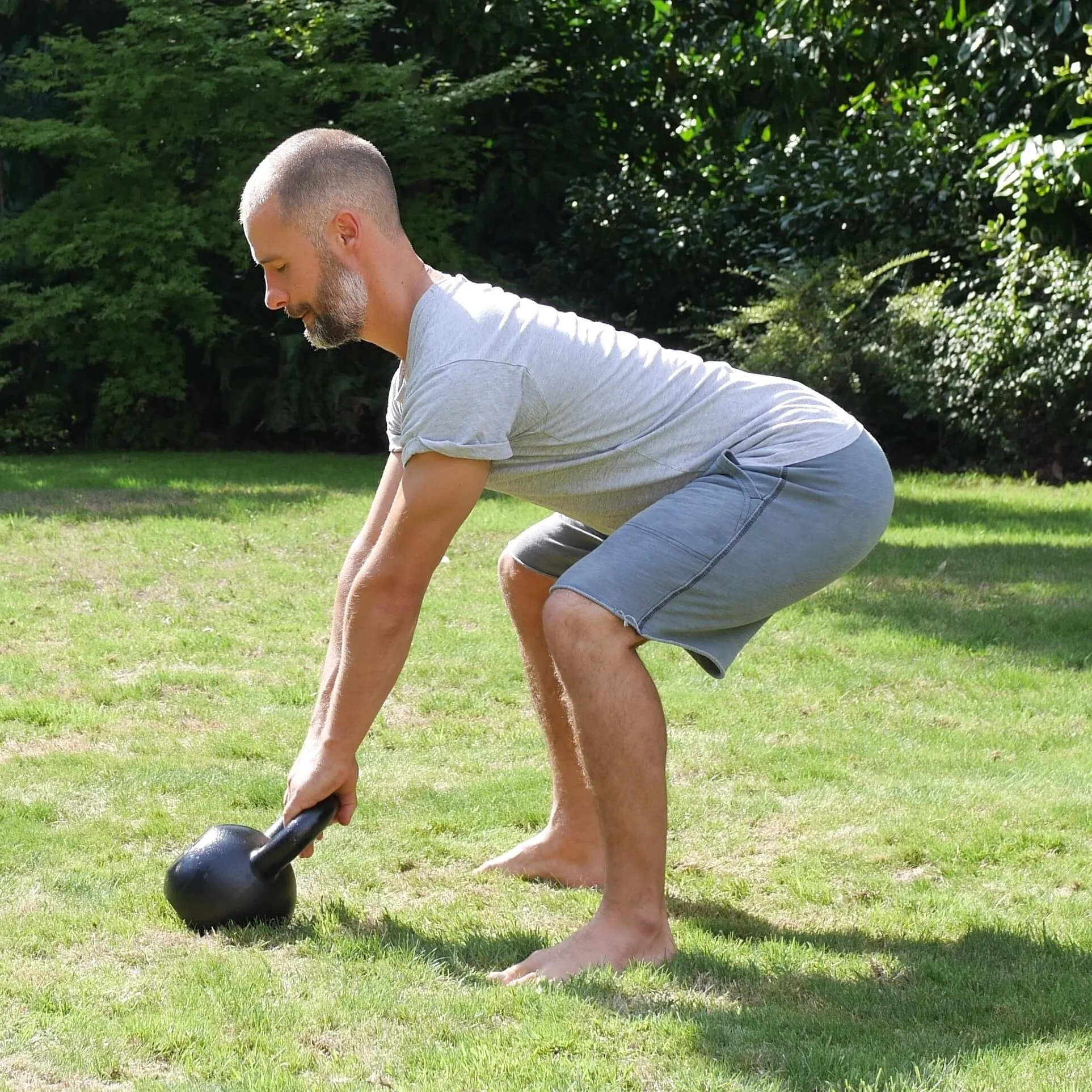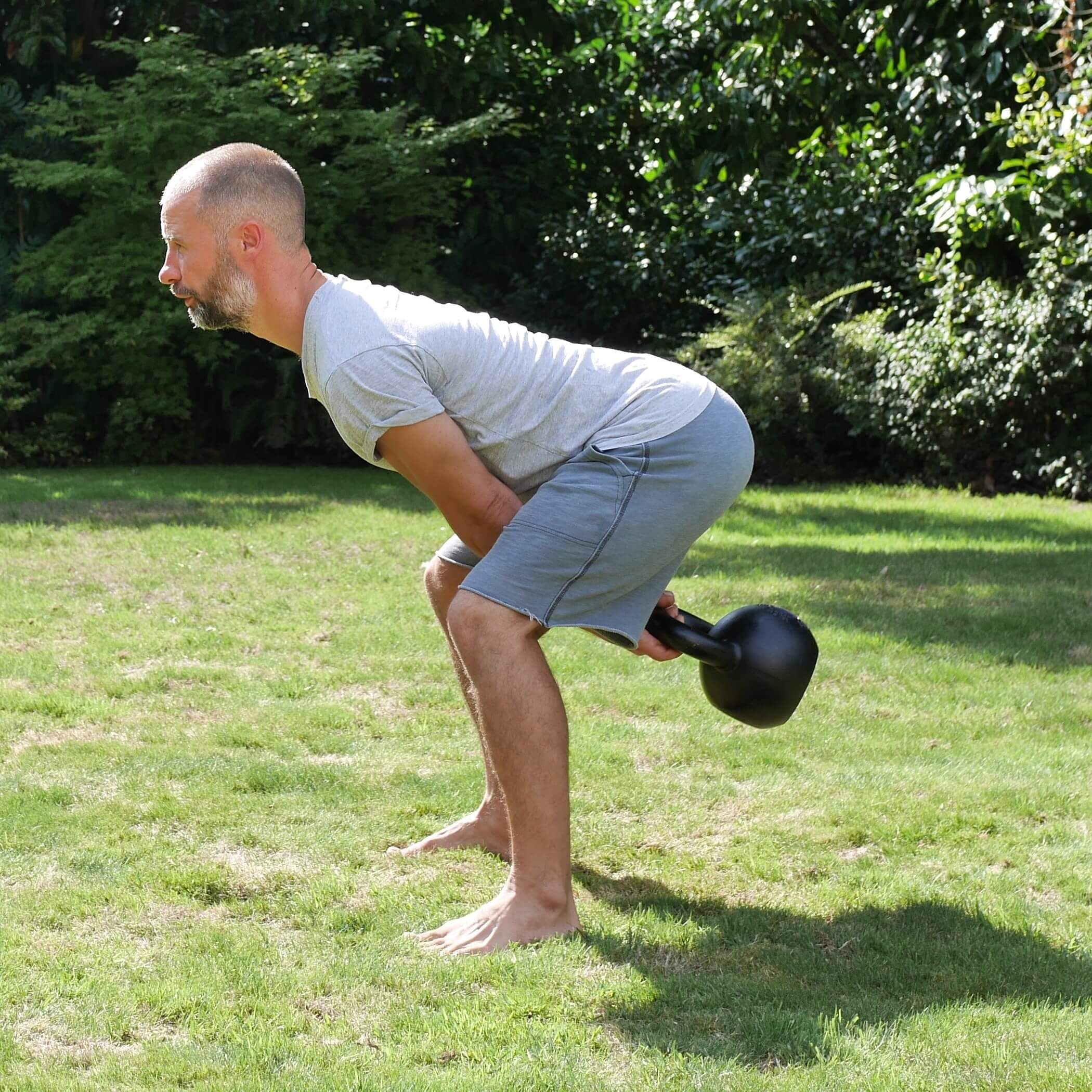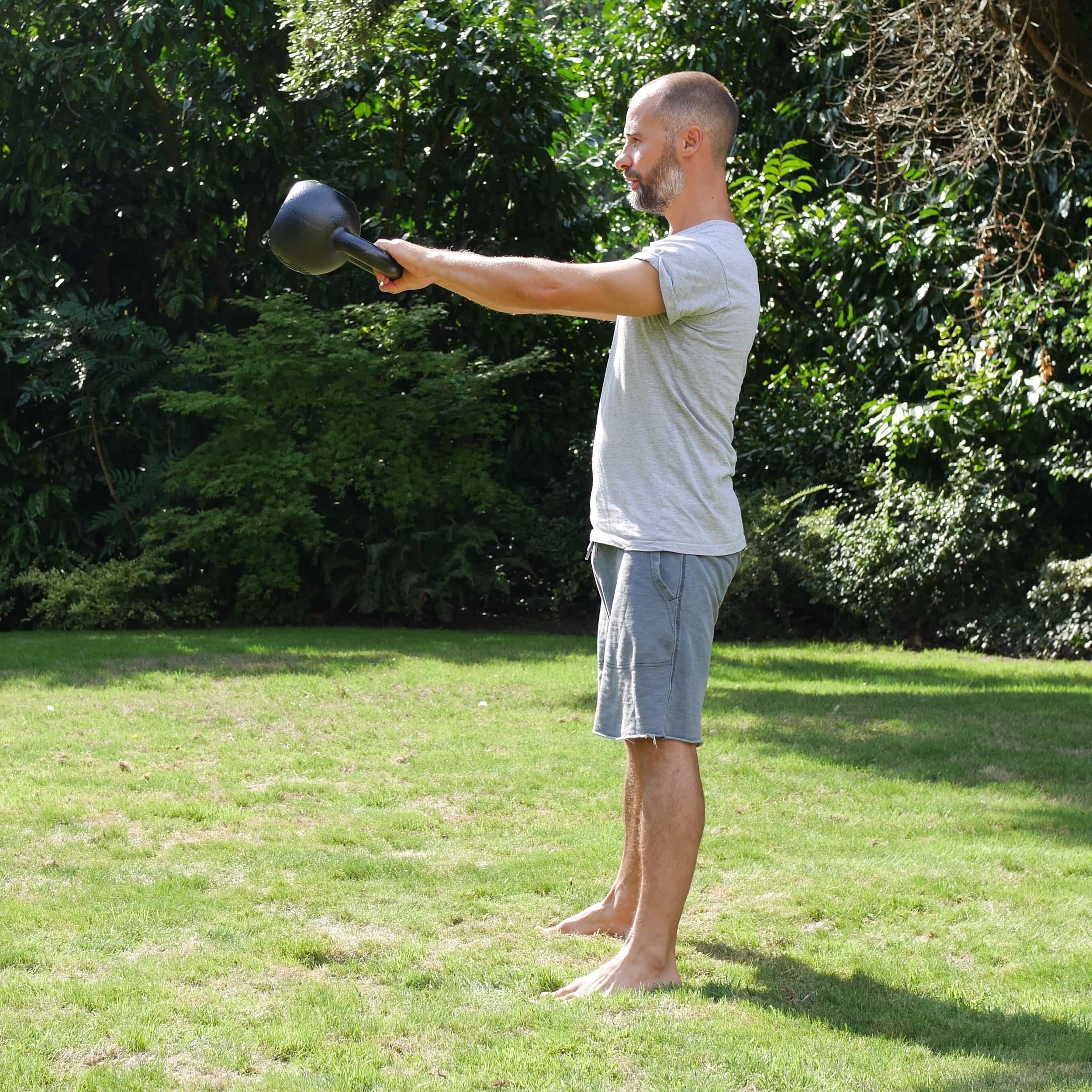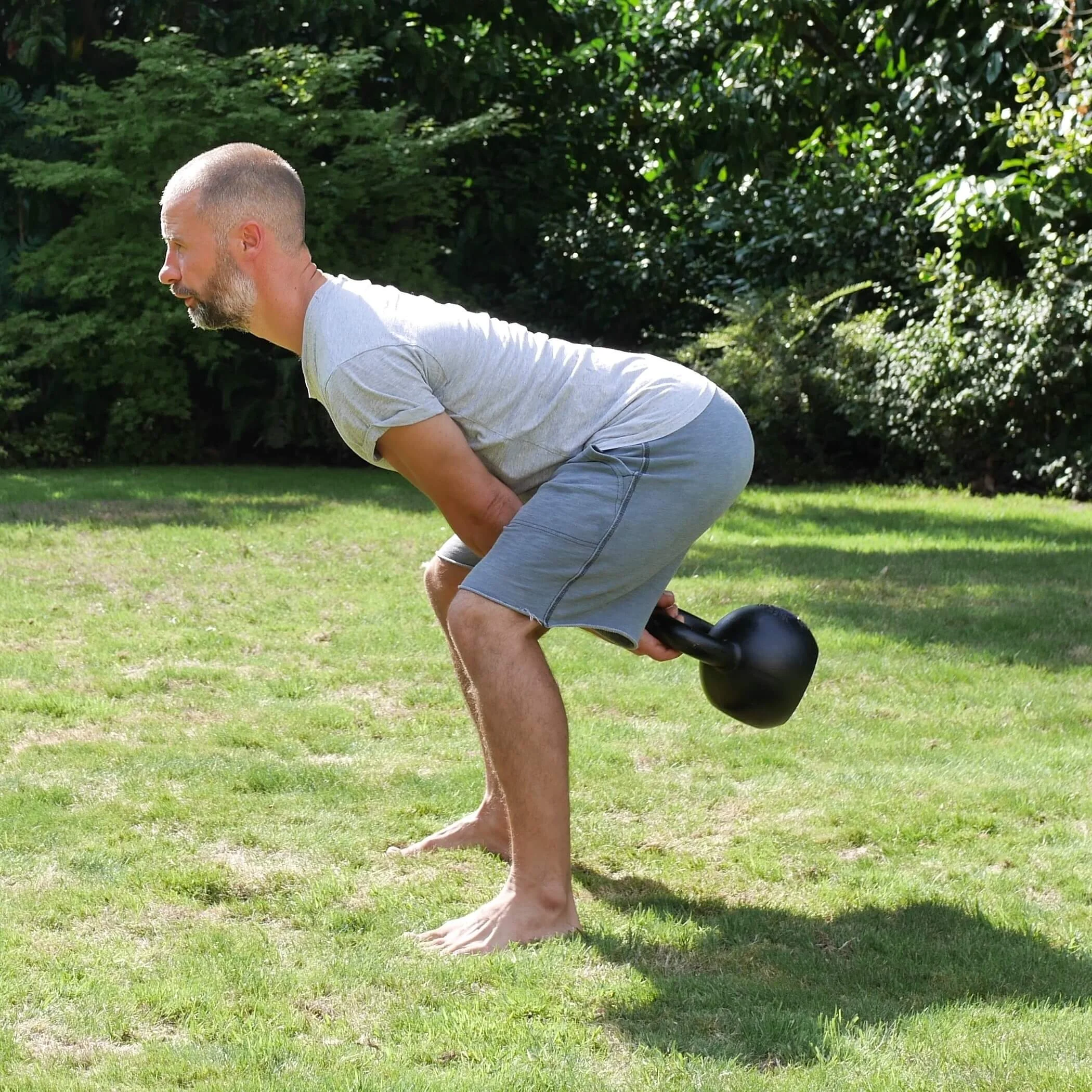Kettlebell Swing Tutorial
The Swing is the king of kettlebell exercises. It will develop whole body strength, endurance, burn fat and teach you a foundation athletic movement pattern.
Once again it is also an antidote to our modern chair based posture.
This all makes the kettlebell swing the closest thing to an all in one exercise. However most people get it wrong which results in poor results and a bad back. This is my step by step guide to perfecting the kettbell swing.
Watch my youtube video or follow my instructions below.
1. Set up
Start with the kettlebell around 1 foot away from you. This distance will differ very slightly depending on your height. If you are taller move it away to accommodate your height.
Now for the set up. Get it right! If you start crappy you will finish crappy!
Stand with the feet around shoulder width apart. Prepare to take hold of the kettlebell by hinging and sinking into your hips, pushing your bottom out, lengthening your spine and shifting your weight onto your heals while keeping your chest and chin up.
Take hold of the kettlebell with both hands and tilt it towards you at a 45 degree angle.
Hold the kettlebell as if trying to bend it. This will draw your shoulder blades down your back to make them feel “packed” This also connects the shoulders and hips for a stronger position.
Shoulders should be above your hips and hips should be above your knees and the back of your legs (hamstrings) should feel engaged and loaded.
I sometimes call this the silverback position as you should be in a position similar to silverback gorilla.
2. Hike Pass to loaded position
Without changing your body position from the set up hike passes the kettlebell behind you as if it were a rugby ball. You should feel the back of your upper leg engage and feel ready to fire the kettlebell forward as if you were a bow and arrow. This is the loaded position.
3. Up Swing
From the loaded position use the back of your legs and backside muscle to project the kettlebell forward to chest height. This is the up swing. Notice the similarity in the up swing and the press up position plank.
4. Lockout & Float
After the up swing brace yourself just the same as with the press up position plank, shoulders dropped, knee caps lifted and stomach braced. This is the lockout position. When you do this you will notice that the kettlebell will float for a mini second before gravity takes over and it falls back to earth. Enjoy the rest.
5. Back Swing
As the kettlebell falls go with it into the back swing phase. Allow the kettlebell to fall back to the loaded position by hinging at the hips and keeping the spine long and straight. It’s important that you maintain the packed shoulders in this phase to keep control of the kettlebell.
Be careful not to let the kettlebell flip up towards your bum at the bottom of the swing.
6. Continue
Continue the cycle from back swing to up swing for the desired number of repetitions.
7. Breathing
Breathe in as the kettlebell falls into the back swing and breathe out with a sharp hisss as you complete the up swing and brace in the lockout position.
Coaching tips
- Keep your shoulders away from your ears. It’s the hamstring and glutes which drive the kettlebell. Don’t try to lift it with your upper body.
- Push your feet into the floor.
- Keep chest, chin and head up.
- Hinge at your hips to keep your spine straight.
- Imagine yourself as a bow and arrow. When the kettlebell is in the back swing position you are like a loaded bow and arrow. From this position fire the kettlebell forward.




